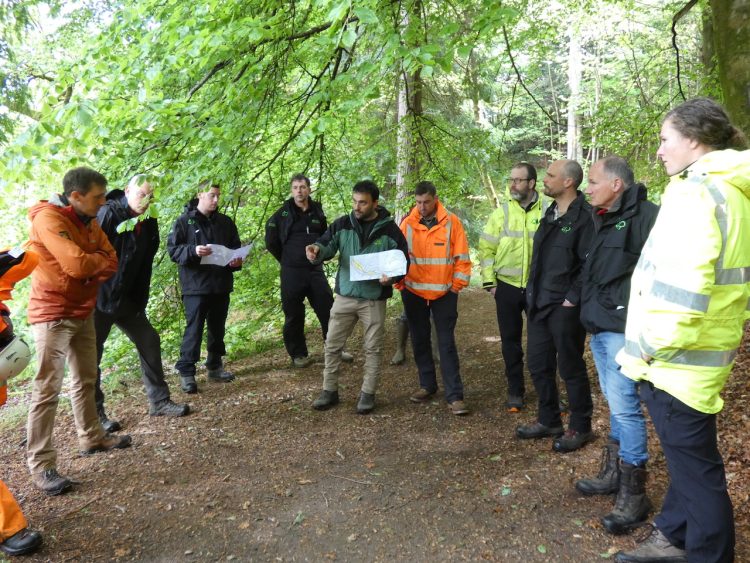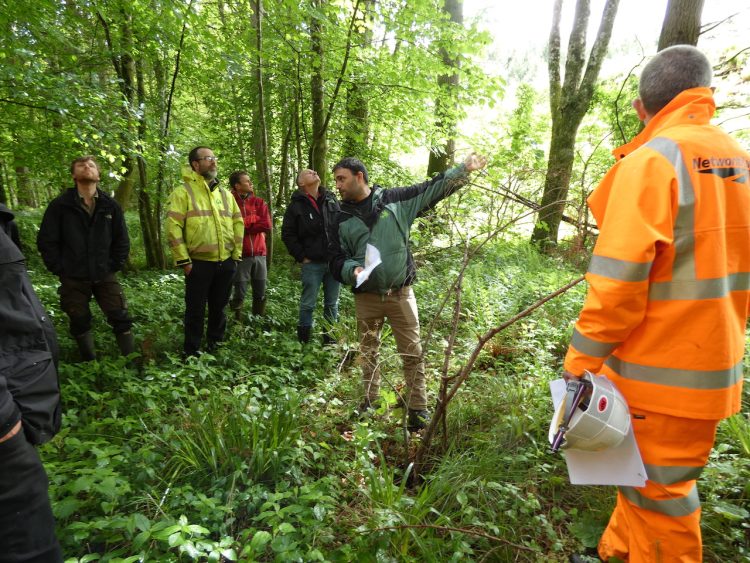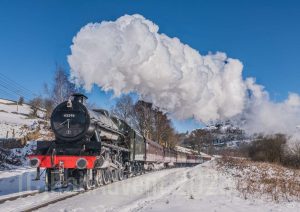Network Rail met with Scottish Government agency Forestry and Land Scotland to discuss approaches to managing the risks and challenges that both organisations experience on land neighbouring the railway.
Discussions covered daily operation issues such as track access, supervision and the removal of dead or diseased trees adjacent to the operational railway and also saw integrating work programmes which would deal with broader issues such as integrated drainage in order to improve water management, cutting the risk of slope failure or rock fall.
The aim of the meeting is to form greater collaboration, which could provide an array of positive outcomes for the way that both organisations work together with the priorities of saving money for the taxpayer, a safer and more efficient railway with improved management of adjacent forestry.
Passengers will benefit from the collaboration, especially those travelling on more scenic railway routes, as it provides the opportunity to improve key views via strategic planning and management of trees beyond the rail corridor.

The meeting took place at Forestry and Land Scotland’s Dunkeld base, where they heard from a selection of speakers and saw first-hand the different sites where mutual interest could lead to collaborative working.
Jonathan Callis, senior asset engineer for Network Rail Scotland commented:
“Where we have two large landowners with so many areas of mutual interest, there is real value in taking a step back from the day-to-day interaction to look at what we can be doing better, different or more efficiently.
“Gaining an insight into the other’s operational challenges and areas of experience and expertise will lay the foundations for closer working relationships that will help avoid incidents and costs and to better utilise resources.
“Government departments with areas of mutual interest should be talking more like this. It is sensible to know and understand where even little changes in the way we both operate, can have a big impact. It matters as we are both funded by the Scottish taxpayer and if we can do things more efficiently there is a fiscal benefit as well as potential to improve resilience across both organisations.”

Dave Pool, FLS’ National Utilities Manager, said:
“It was really useful to meet with the teams at Network Rail to discuss our common tasks and common interests.
“We have much we can share in terms of knowledge and expertise, and it was good to note that safe working practices are a priority for both organisations.
“There is clearly a lot of benefit to be had from working together. For example, Network Rail teams might use our forest road network to get to remote rural locations in emergencies, or to deliver or remove materials, and we might be able to find ways to safely access valuable crops that are close to railway lines.
“The discussions have been very informative for both organisations and seeing things from the railway perspective will certainly help to inform our future planning processes and forestry operations.”
Further meetings are also planned in different areas of Scotland and it is hoped that a Memorandum of Understanding (MOU) can be made which will define and agree roles clearly alongside responsibilities over the operational scope for both of the organisations.
Forestry, Land Scotland and Network Rail’s areas of mutual interest are:
- Felling and removal of large trees which pose a safety risk to the operational railway.
- Management of drainage assets which pose a risk to both parties.
- Approaches to land management, tree risk and site clearance.
- Ways to enable the railway corridor and productive forest operations to efficiently co-exist.
- Sustainable management of emerging risks from beaver activity.
- Priorities of forestry site management and harvesting methods.
- Key priorities for both organisations both locally and strategically.
- Cooperation in emergency situations and better day-to-day working arrangements.
- Drainage and geotechnical management and better joint working.






Responses
I have read your comments Cloe White and think your report on the meeting between Network Rail and FLS made some good points but in or about Dunkeld there are many places where the blockwork is being damaged by vegetation that is growing between blockwork and permanently damaging it, with huge long term cost implications. In many cases a simple application of Glyphosate would kill or reduce this damage- truly a case of ‘a stitch in time, saves nine’